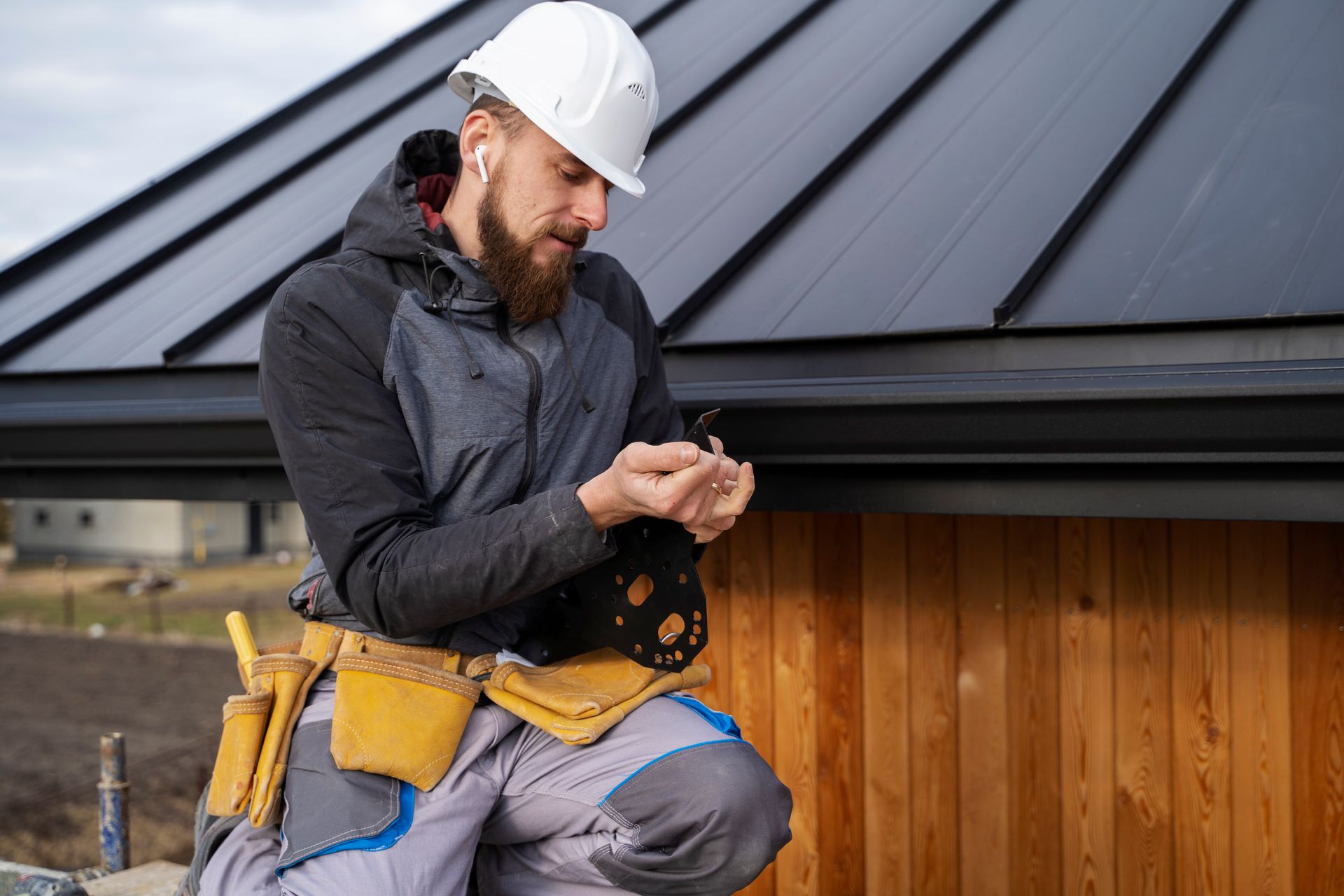Frequently Asked Questions
I have a metal roof, what kind of gutter should I use?
That depends on the slope of the roof, and the type of fascia. We recommend discussing this with your roofing or gutter installer.
What if I only need to repair or replace a section of my gutter?
Do-it-yourselfers should only attempt gutter installation with the proper safety equipment and must be comfortable on a ladder. Also make sure to be extremely aware of contact with power lines.
My gutters leak/spill over in the middle but don't appear to sag. I checked and they are not clogged with leaves. What should I do?
Use caution while up on the ladder. The first thing is to confirm that the gutter is not sagging, spikes may be loose causing imperceptible sagging, and draining water away from the gutter downspout. Use a builders level and check the direction of flow. Also, check the gutter outlets for any hidden obstructions that may be slowing the water flow. If everything is found to be in order, you may need additional downspouts to handle the volume of water coming off the roof. Additional outlets and downspouts can easily be added to existing gutter systems.
Can I paint my gutters?
Yes, but it is not recommended, for it will void any paint finish warrantees, and will shorten the life of the gutters as paint will more easily peel and chip away from the aluminum.
How to evaluate what your gutters are
1. Visual Inspection:
Shape:
- K-Style: Most common, flat back with a decorative front resembling crown molding.
- Half-Round: Traditional, curved shape.
- Box: Square or rectangular shape.
- Gutter Helmet: Unique design with a hood to prevent leaves and debris from entering.
Material:
- Aluminum: Most popular, lightweight, and affordable.
- Vinyl: Budget-friendly, lightweight, and comes in various colors.
- Steel: Durable, strong, but can rust.
- Copper: High-end, long-lasting, and aesthetically pleasing, but expensive.
- Zinc: Durable, long-lasting, and environmentally friendly.
2. Measure the Gutter:
- Width: Measure the width of the gutter at several points along its length.
- Height: Measure the height of the gutter from the fascia board.
3. Check for Connections:
- Seamless vs. Sectional: Seamless gutters are custom-made and joined on-site, while sectional gutters are pre-made in shorter lengths and joined together.
4. Examine the Downspouts:
- Size: Measure the diameter of the downspouts (usually 2x3 inches or 3x4 inches).
- Location: Note the number and location of downspouts.
5. Consider Your Home's Architecture:
The style of your home can influence the type of gutters that were originally installed.
Should I hire a professional gutter installer to install my gutters?
Yes. Seamless gutters, offer the best value and can only be installed on-site by a professional.
Our home does not have a fascia board. It has exposed eaves with the rafters coming out. Can gutters be installed on this type of area?
There are several methods for hanging gutters from rafter ends. One method is to install fascia boards for mounting. Another is by installing hidden hangers and roof straps to install the gutter system.
What thickness of gutter should I get?
The standard is .027 or .032. However in snow regions the heavier gauge is recommended to provide greater durability and strength. If you are installing copper, a 5-ounce copper is recommended.
Why upgrade?
When any of these problems occur, it may be time to replace your gutters. Ideally, the life expectancy of the average aluminum gutter is 20 – 30 years or longer, depending on maintenance, the care you take putting ladders against them, and regional weather conditions in your area of the country. Copper gutters may last 50 yrs, and galvanized steel gutters 20 years or less.
Why upgrade?
When any of these problems occur, it may be time to replace your gutters. Ideally, the life expectancy of the average aluminum gutter is 20 – 30 years or longer, depending on maintenance, the care you take putting ladders against them, and regional weather conditions in your area of the country. Copper gutters may last 50 yrs, and galvanized steel gutters 20 years or less.
Debris Accumulation
- Loose debris will quickly begin to decompose, matting down and compressing into a solid sheet as it becomes damp, causing gutter clogs.
- Accumulated debris caused by clogged gutters is a fire hazard, and it is extremely bad for the roof, accelerating wear and backing water up under the shingles.
- It can also create a solid bridge over the top of the gutters that can send water cascading over the edge.
Damage Clogged Gutters Can Cause
- Basement flooding
- Foundation cracking and settlement
- Soil erosion
- Dry-rot on fascia boards, soffit, and roof
- Paint damage
- Window, door and siding damage
- Mold damage
- Fire damage in dry, high wind, fire-prone areas
Common Causes of Gutter Damage
- Leaning ladders against gutters to clean them out
- Seams splitting apart (on non-seamless types)
- Ice formation
- Pest infestations
- Stains caused by constant overflowing and rusting spikes
- Storm and tree damage
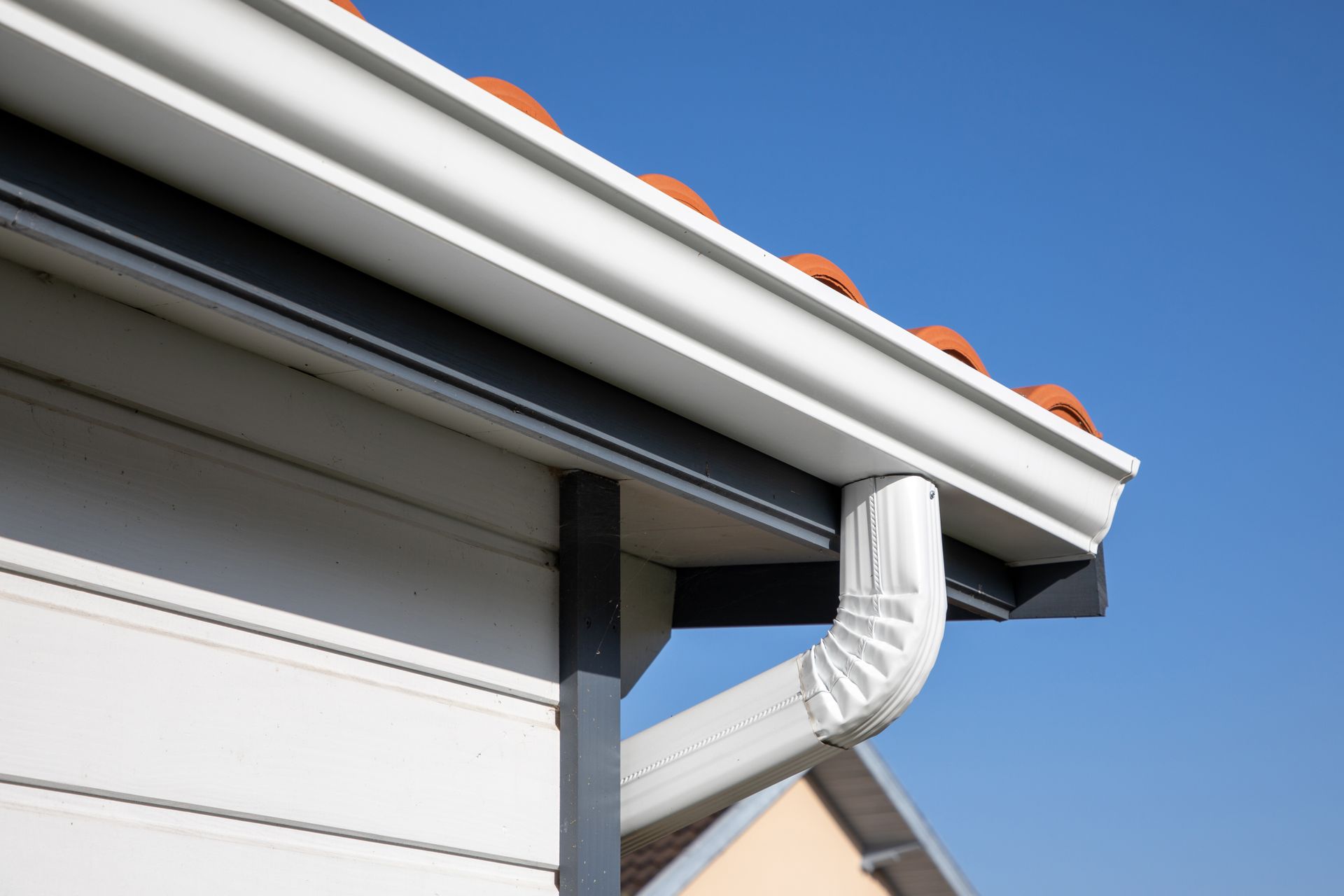
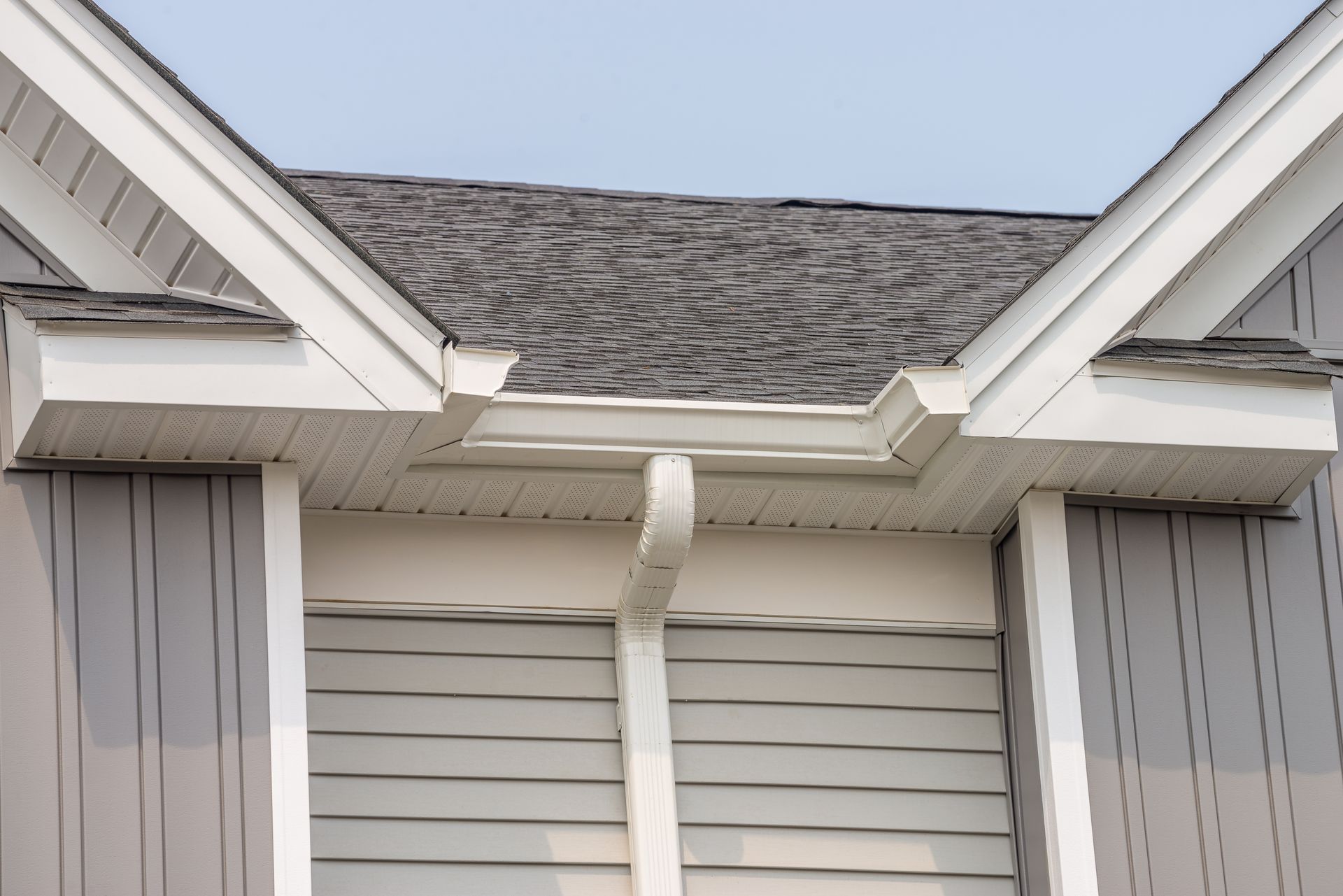
What are gutters for?
All gutters are troughs that collect rain running off a roof and channel it, with proper slopes, to downspouts that carry the rain water to the ground and away from your siding, windows, doors and foundation. The most commonly used gutter – open gutters – should be regularly cleaned of leaves and debris in order to function properly.
In the course of collecting water, open rain gutters also collect leaves, acorns, pine needles, and other debris which can cause clogs anywhere in the gutter itself or sometimes in the downspouts. In dry conditions clogged gutters are a fire hazard; and during heavy rains, clogged gutters and downspouts can cause rainwater to overflow, potentially causing substantial damage to your building, landscaping and basement. Covers for gutters, gutter guards and screens to keep debris out, can reduce or eliminate these problems and lengthen the life of your gutters.
Where did gutters come from?
The need to collect rainwater for drinking and channel water for irrigation dates back to ancient times. Wooden gutters and downspouts, were developed fairly recent. Rainwater captured in barrels was used for bathing and washing. The original wood gutters were made from old growth cedar, a product that became rarely available, and was substituted with new cedar or hemlock wood, lined with zinc to help them last longer.
In the twentieth century, steel became a popular material for gutters because of its resistance to rotting and its strength. After World War II when aluminum became available for industrial uses, it became the popular choice for gutters because of its light weight and durability.
In the 1960s, the invention of seamless aluminum gutters changed the situation completely. A machine was developed that holds a roll of aluminum, called gutter coil, at one end, and extrudes a formed gutter at the other end. The formed gutter can be cut to any length desired and custom fit to the home on site. This method of creating gutters without seams, makes the gutters stronger and leak proof.
Today over 70% of residential gutters are seamless aluminum gutters, also known as roll-formed gutters, (OG or K-style gutters.) Seamless gutters come in a wide choice of colors, painted and baked on to the metal when it is made. Seamless aluminum gutters are custom fit to your home on site.
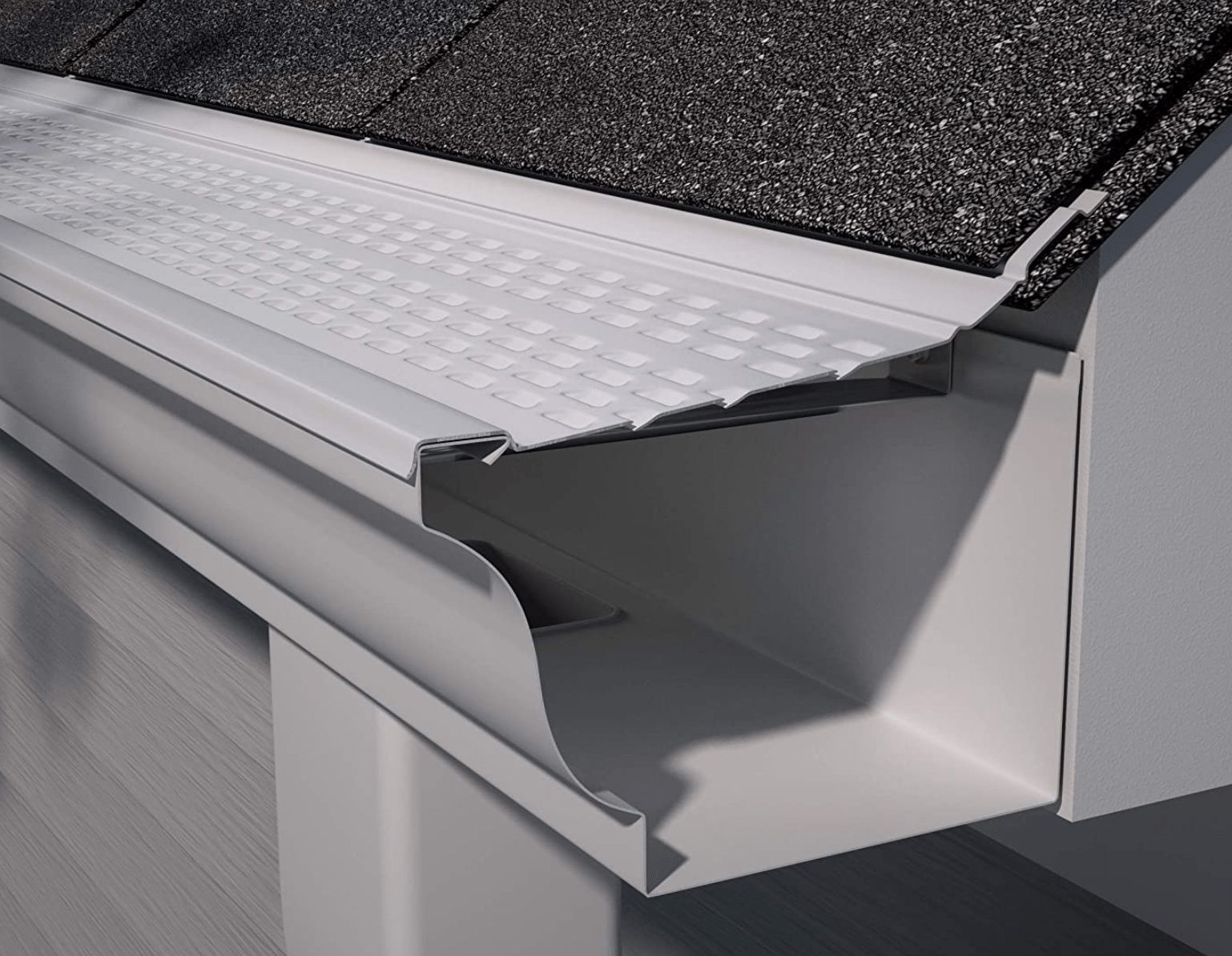
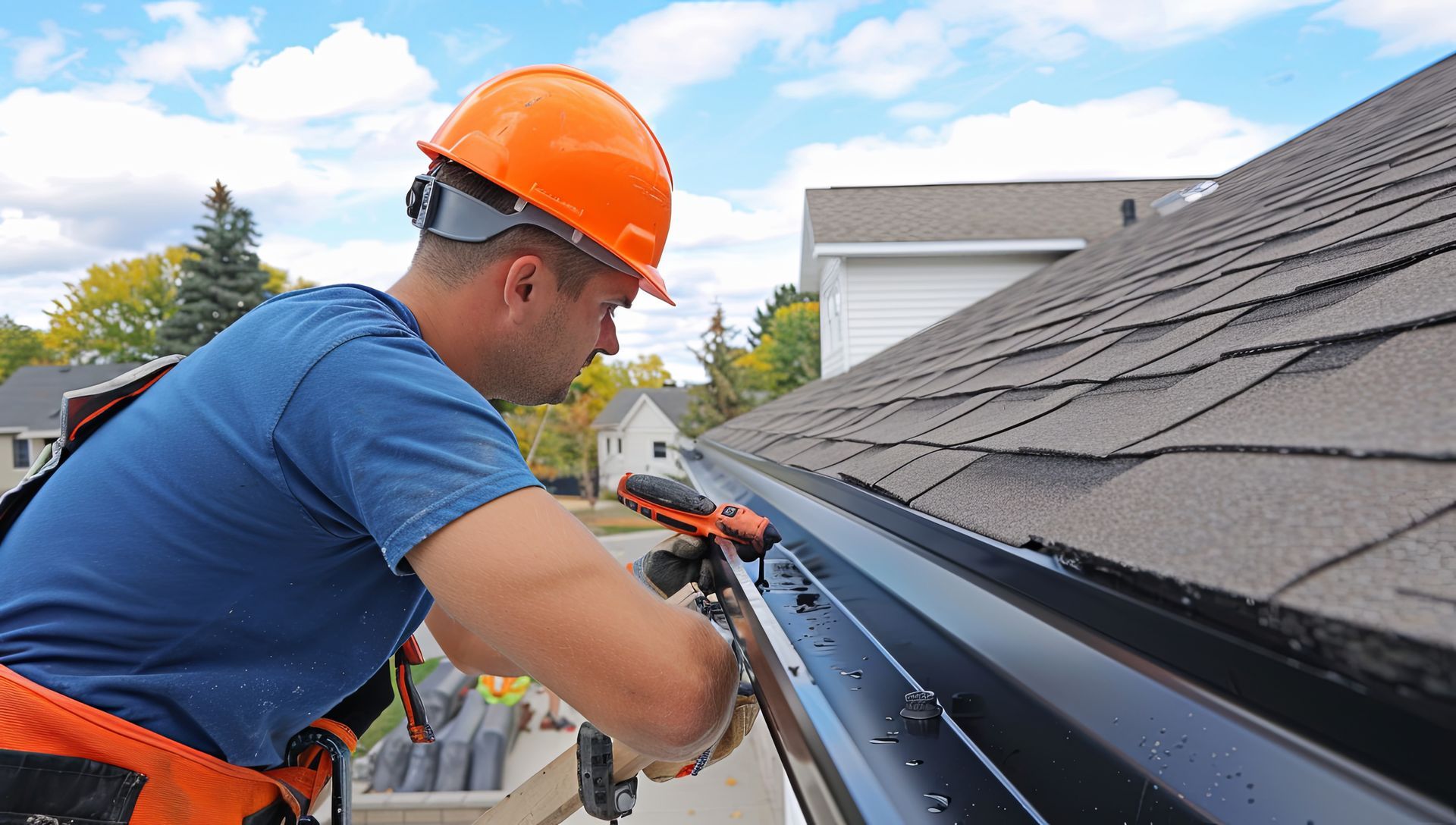
How do I maintain my gutters?
Regardless of what type of gutter system you choose, gutters and roofs need maintenance. If you have open rain gutters, they should be cleaned at least twice a year; in the Spring after trees bud, dropping flowers acorns, and seed pods; and in the fall after they drop their leaves. Depending on weather conditions where you live, an additional cleaning or two may also be necessary.
If you also have a low-sloped roof, even a leaf protection system cannot prevent debris from accumulating on your roof, so with or without a leaf protection system, roof maintenance is required. A simple cleaning with a broom or blower is all that is necessary. Plus, loose debris accumulating on the roof is a fire hazard and is extremely bad for the roof, accelerating wear and backing water up under the shingles.
However, cleaning out your gutters and brushing debris from your roof, though an important task, is not an easy one. Climbing and moving ladders and working several feet off the ground can be dangerous. It requires strength and agility to maintain your personal safety, as well as climbing protection systems or devices. If you cannot do this safely, call a contractor or install a system that offers leaf protection.
What types of gutters are out there?
Gutters come in several sizes and shapes called profiles. The most common type of gutter used today is the open gutter, which comes in standard lengths for do-it-yourselfers, and also as continuous roll-formed seamless gutters, which must be installed by a contractor.
Most residential gutters come in two sizes-- 5" and 6" --and are made of either aluminum, steel, zinc, vinyl, or copper in a standard "K" style.
The typical 5 inch K-style gutter comes with 2 x 3 inch downspouts. A larger residential gutter system would consist of 6 inch K-style gutter using a 3 x 4 inch downspout.
One foot of 5" K-Style gutter holds 1.2 gallons of water. One foot of 6" K-Style gutter holds 2.0 gallons of water. For commercial applications, box gutters, can be made in 7, or 8 inches or even larger custom sizes that hold even more water.

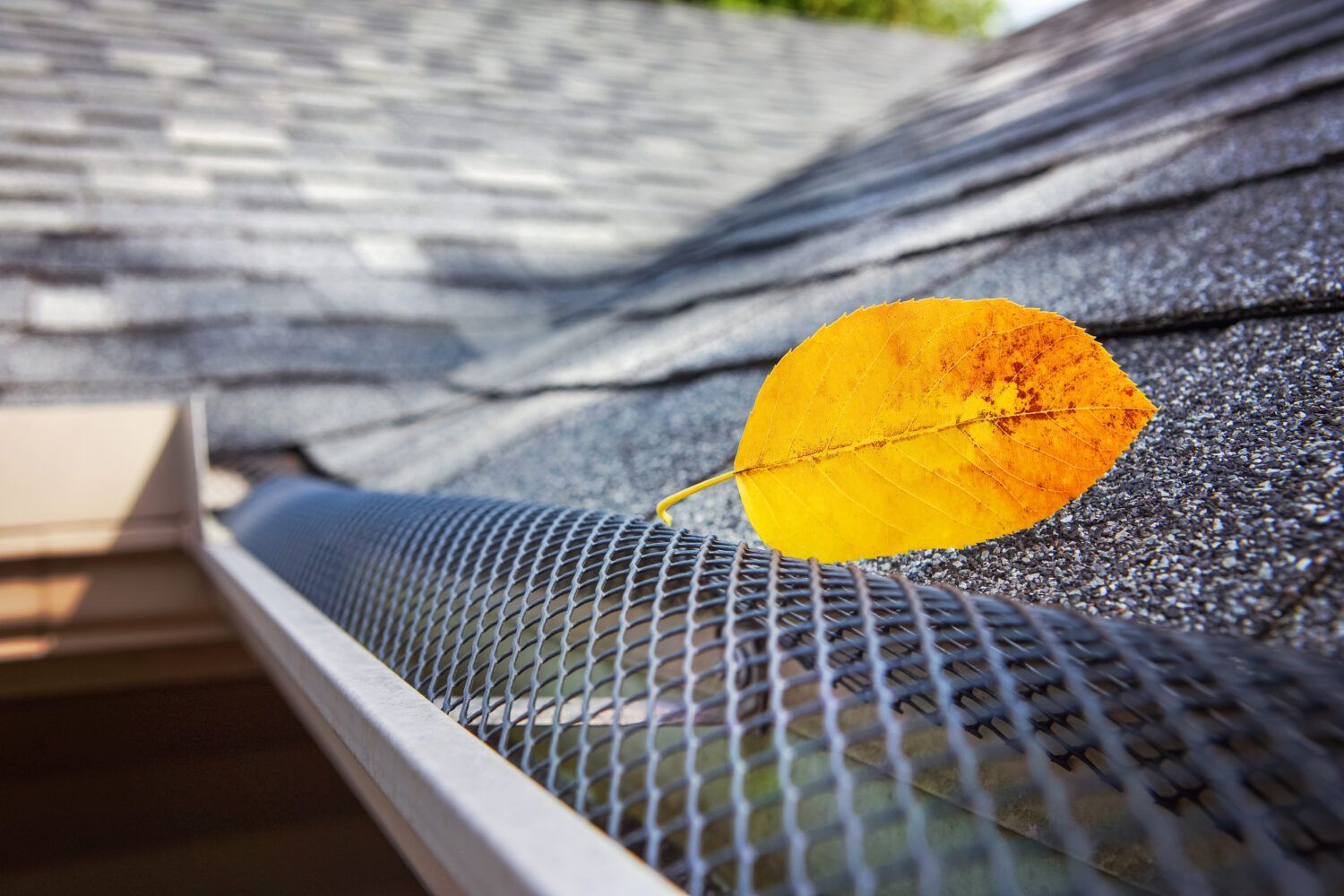
What are gutter guards?
Gutter guards, a form of leaf protection, allow water to flow freely through the gutter bottom, while preventing debris from falling into the gutter and interrupting the flow.
This interest in maintenance reduction through debris filtering has grown more popular in recent years, along with an aging population of homeowners. Though it adds cost to the initial installation, these costs can be mitigated over the years by the safety benefits and /or eliminating costs associated with gutter cleaning which can range from $50 to $250 depending on the size of the house and number of gutters.
There are now many gutter guards or leaf protection products available to the homeowner. They have evolved into several configurations and come in a broad spectrum of materials and prices, and with varying degrees of effectiveness. Many good gutter installers carry all types. Some are add-on devices that fit over existing gutters. Others are complete systems that require replacing existing gutters.
Can I install my own gutters?
The pitch of your roof, the number of cut-outs you have, (gables, dormers, and perpendicular roof lines), and the type of material covering your roof, all affect the selection of gutters for your home. An experienced do-it-yourselfer may be able to install gutters and slope them correctly to downspouts when they are going on a ranch style house with two or three straight runs of guttering.
